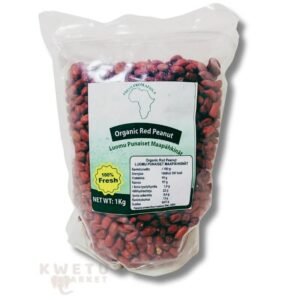Description
Introduction to Kapenta
Burundi Kapenta, a small freshwater fish, is a staple in the diets of many people in Zambia, Malawi, and Zimbabwe. Also known locally as Matemba, this fish plays a crucial role in both cultural traditions and daily nutrition. Kapenta’s origins trace back to the expansive waters of Lake Tanganyika and Lake Kariba, where it thrives abundantly. Its significance extends beyond its availability, as it provides essential nutrients and supports local economies through fishing and trade.
The importance of Kapenta in these regions cannot be overstated. It is a primary source of protein, particularly in rural areas where other protein sources may be scarce or unaffordable. The fish is rich in omega-3 fatty acids, vitamins, and minerals, making it a valuable addition to the diet. Traditionally, it is prepared in various ways, including drying, smoking, and frying, each method enhancing its flavor and shelf life. This versatility in preparation methods also underscores its cultural significance, as it is often featured in communal meals and special occasions.
In addition to Kapenta, another small fish, Rastrineobola argentea, commonly known as Dagaa or Ndaga, shares a similar role in the region. While Dagaa is primarily found in Lake Victoria, it shares many attributes with Kapenta, including its nutritional profile and cultural importance. Both fish are integral to the food security and livelihoods of the communities around these lakes, highlighting the interdependence between natural resources and human sustenance.
Understanding the role of Kapenta and its cousin Dagaa provides insight into the broader socio-economic and nutritional landscape of Zambia, Malawi, and Zimbabwe. This introduction sets the stage for a deeper exploration of how these small fish sustain and enrich the lives of millions in these countries.
Nutritional Value of Kapenta
Kapenta, a small fish widely consumed in Zambia, Malawi, and Zimbabwe, is renowned for its exceptional nutritional profile. This diminutive aquatic species boasts a high protein content, making it an invaluable source of essential amino acids. These amino acids are vital for various bodily functions, including tissue repair, muscle growth, and overall metabolic health. A single serving of Kapenta can provide a significant portion of the daily recommended intake of protein, which is crucial for maintaining a balanced diet.
In addition to its rich protein content, Kapenta is packed with omega-3 fatty acids. These essential fats play a critical role in cardiovascular health by reducing inflammation, lowering blood pressure, and decreasing the risk of heart disease. Omega-3 fatty acids are also beneficial for brain health, supporting cognitive function and potentially reducing the risk of neurodegenerative diseases.
Kapenta is also a valuable source of vitamins and minerals. It contains notable amounts of vitamins such as B12, which is essential for red blood cell formation and neurological function, and vitamin D, which is critical for bone health. Minerals like calcium, phosphorus, and iron are abundant in Kapenta, contributing to strong bones, energy production, and oxygen transport within the body. The presence of these nutrients makes Kapenta a well-rounded food choice that supports overall health and well-being.
In the regions where Kapenta is popular, its nutritional value plays a vital role in food security. The affordability and availability of Kapenta make it an accessible source of essential nutrients for many households. By incorporating Kapenta into their diets, individuals can ensure they receive a balanced intake of proteins, fats, vitamins, and minerals. This not only helps in maintaining good health but also in combating malnutrition in areas where other nutrient-rich foods may be scarce.
Cultural Significance of Kapenta
Kapenta, a small, dried fish, holds immense cultural significance in Zambia, Malawi, and Zimbabwe, transcending its role as a mere food item. In these regions, Kapenta is deeply woven into the fabric of daily life, local cuisine, and various cultural practices and traditions.
In local cuisine, Kapenta is a staple ingredient, often featured in everyday meals and special dishes alike. Its versatility allows it to be prepared in multiple ways, such as frying, boiling, or stewing, often accompanied by staple foods like maize meal (nsima or sadza). The preparation of Kapenta is usually a communal activity, reflecting the strong sense of community and shared heritage. Families often gather to clean, dry, and cook the fish, making the process not just a culinary task, but a social event.
Kapenta also plays a significant role in festivals and celebrations. During traditional festivals, Kapenta dishes are prepared in large quantities to serve guests, symbolizing abundance and hospitality. The fish is often used in ceremonial feasts, where it is considered a delicacy and a source of pride for the host community. These festivals provide an opportunity for people to come together, celebrate their heritage, and strengthen social bonds.
In daily life, Kapenta is a vital source of nutrition, providing essential proteins and nutrients to many households. Its affordability and long shelf life make it an accessible food source for both urban and rural populations. The fish’s availability in local markets ensures that it remains a consistent part of the diet, connecting people to their cultural roots each time they consume it.
Moreover, Kapenta’s cultural significance extends beyond the kitchen. Traditional songs, dances, and stories often feature this small fish, highlighting its importance in the collective memory and identity of the people. These cultural expressions serve to pass down knowledge and appreciation of Kapenta to future generations, ensuring its continued relevance in the cultural landscape of Zambia, Malawi, and Zimbabwe.
Economic Impact of Kapenta Fishing
Kapenta fishing holds substantial economic significance in the communities of Zambia, Malawi, and Zimbabwe. As a primary source of livelihood, it provides employment opportunities for thousands of individuals, ranging from fishermen to market vendors. The fishing industry is structured with various stages including catching, processing, and selling, each creating jobs and contributing to the local economy.
The employment opportunities generated by Kapenta fishing are diverse. Fishermen work in organized groups, often supported by cooperatives that facilitate access to resources and market linkages. Processing of Kapenta, which includes drying and packaging, employs numerous people, particularly women, who play a critical role in the value chain. Additionally, the distribution and sale of Kapenta in local and regional markets create further employment prospects.
In terms of economic contribution, Kapenta fishing is a significant revenue earner for local communities. It supports the livelihoods of many families who depend on the income from fishing and related activities. The industry also contributes to food security, as Kapenta is a crucial source of protein for many households. Moreover, the trade of Kapenta extends beyond local borders, with exports providing foreign exchange earnings that bolster national economies.
However, the industry is not without its challenges. Overfishing poses a substantial threat to the sustainability of Kapenta stocks, driven by increased demand and inadequate regulatory measures. Environmental concerns, such as pollution and habitat destruction, further exacerbate the situation, threatening the long-term viability of the fishing industry. Effective management and conservation strategies are essential to address these issues and ensure the sustainability of Kapenta fishing for future generations.
The economic impact of Kapenta fishing is undeniable, playing a pivotal role in the socio-economic fabric of communities in Zambia, Malawi, and Zimbabwe. By addressing the challenges faced by the industry, it is possible to harness its full potential, ensuring continued economic benefits while safeguarding the environment.
Comparing Kapenta and Dagaa
Rastrineobola argentea, commonly known as Dagaa or Ndaga, provides an interesting point of comparison with Kapenta, a term that encompasses two species: Lake Tanganyika Sardine (Limnothrissa miodon) and Lake Malawi Sardine (Stolothrissa tanganicae). Both Kapenta and Dagaa are small, nutrient-dense fish that play a significant role in the diets of people in Zambia, Malawi, and Zimbabwe. However, they exhibit distinct differences in terms of habitats, physical characteristics, nutritional profiles, and cultural significance.
Kapenta primarily inhabit the deep waters of Lake Tanganyika and Lake Malawi, thriving in the pelagic zones where they feed on zooplankton. On the other hand, Dagaa are native to Lake Victoria, Lake Kyoga, and other smaller lakes in the region, as well as some river systems. Dagaa also prefer open water but are more commonly found in shallower depths compared to Kapenta.
Physically, Kapenta and Dagaa exhibit noticeable differences. Kapenta are typically longer, measuring up to 10 centimeters, with a silvery, streamlined body that aids in their swift movements through deep waters. Dagaa, in contrast, are slightly smaller, averaging around 7 centimeters, and possess a more robust body. Despite these differences, both fish are known for their relatively high oil content, which contributes to their rich flavor.
Nutritionally, both Kapenta and Dagaa are excellent sources of protein, omega-3 fatty acids, calcium, and other essential nutrients. These small fish are particularly valued for their high protein content, which contributes significantly to the dietary needs of the local populations. However, some studies suggest that Kapenta might offer slightly higher levels of certain micronutrients, such as vitamin A and D, compared to Dagaa.
Culturally, Kapenta and Dagaa hold substantial importance in the regions where they are found. In Zambia, Malawi, and Zimbabwe, Kapenta is not only a staple food but also a crucial economic commodity, often dried and traded extensively. Similarly, Dagaa is a vital part of the diet and economy in regions around Lake Victoria. Both fish are deeply embedded in the culinary traditions, often prepared in various ways, including drying, smoking, and frying, to enhance their flavors and preserve them for longer periods.
In conclusion, while Kapenta and Dagaa share similarities as small, nutrient-rich fish crucial to local diets and economies, their differences in habitat, physical characteristics, and specific nutrient compositions highlight the unique roles each plays in their respective regions. Understanding these distinctions provides a comprehensive view of their significance in the cultural and nutritional landscape of East and Southern Africa.
Kapenta at Kwetu Market in Finland
Kwetu Market in Finland stands out as a premier destination for those seeking authentic African and Asian food products. Nestled in the heart of the country, this market has become a staple for expatriates and locals alike who crave the unique flavors of their homelands. Among the myriad of offerings, Kwetu Market proudly features Kapenta, the beloved small fish cherished in Zambia, Malawi, and Zimbabwe.
Located in the bustling city center, Kwetu Market is easily accessible, allowing for convenient shopping experiences. The market is known for its diverse range of products, including fresh produce, spices, grains, and specialty items that cater to a variety of culinary traditions. For those in Finland yearning to recreate traditional African dishes, Kwetu Market serves as a haven of familiar tastes and aromas.
Kapenta, in particular, holds a special place on the shelves of Kwetu Market. This small fish, rich in nutrients and flavor, is available in both dried and fresh forms, offering versatility for various recipes. The market ensures that the Kapenta they stock is of the highest quality, sourced directly from reliable suppliers who understand the cultural significance of this fish. Whether you’re looking to prepare a simple stew or an elaborate festive meal, Kwetu Market provides the essential ingredient to bring your dishes to life.
In addition to Kapenta, Kwetu Market’s extensive inventory includes other African delicacies, making it a one-stop-shop for all your culinary needs. The market’s dedication to authenticity and quality has earned it a loyal customer base, who appreciate the effort to provide genuine African and Asian products. For anyone in Finland wanting to experience the traditional tastes of Africa, Kwetu Market is the ideal place to start.
“`html
How to Cook and Enjoy Kapenta
Kapenta, a small fish treasured in Zambia, Malawi, and Zimbabwe, offers a delightful culinary experience when prepared using traditional methods. One of the most popular recipes is the simple fried Kapenta. To prepare this dish, start by soaking the dried Kapenta in warm water for about 30 minutes to rehydrate them. After soaking, drain and pat them dry. Heat a generous amount of vegetable oil in a pan until hot, then add the Kapenta. Fry until they turn golden brown and crispy, which typically takes about 5-7 minutes. Season with salt and pepper, and serve hot with a side of nshima (a maize flour porridge) or rice.
In Malawi, a popular way to enjoy Kapenta is by cooking them in a tomato and onion sauce. Begin by frying chopped onions and garlic in oil until fragrant. Add diced tomatoes and cook until they soften and form a thick sauce. Incorporate the soaked and drained Kapenta into the sauce, and let it simmer for 10-15 minutes. This method enhances the fish’s flavor and pairs wonderfully with stiff porridge or steamed vegetables.
Zimbabweans often prepare Kapenta with groundnut (peanut) sauce. To make this dish, soak the Kapenta, then fry them lightly in oil. In a separate pan, prepare a groundnut sauce by mixing ground peanuts with water and cooking until it forms a creamy consistency. Combine the fried Kapenta with the groundnut sauce and simmer for an additional 10 minutes. This rich and nutty dish goes well with sadza (a maize meal dish) or green leafy vegetables.
For those looking to explore modern twists on classic recipes, Kapenta can be incorporated into salads or pasta dishes. For a light and refreshing salad, toss fried Kapenta with mixed greens, cherry tomatoes, cucumbers, and a lemon vinaigrette. Alternatively, add fried Kapenta to a pasta dish with olive oil, garlic, cherry tomatoes, and a sprinkle of parmesan cheese for a unique fusion of flavors.
By embracing both traditional and contemporary methods, cooking Kapenta can offer a versatile and enjoyable culinary journey, honoring the rich heritage of Zambia, Malawi, and Zimbabwe while appealing to a wide range of tastes.
Conclusion and Contact Information
In conclusion, Kapenta holds a significant place in the cultural, nutritional, and economic landscapes of Zambia, Malawi, and Zimbabwe. This small fish, revered for its rich protein content and essential nutrients, forms a crucial part of the diet in these regions. Beyond its nutritional value, Kapenta is deeply embedded in local traditions and culinary practices, reflecting the diverse cultural heritage of the communities that depend on it.
The economic importance of Kapenta cannot be overstated. It supports local fisheries and provides livelihoods for countless families, contributing to the economic stability of the region. The sustainable fishing practices associated with Kapenta also highlight the community’s dedication to preserving their natural resources for future generations.
For those interested in experiencing the unique taste and numerous benefits of Kapenta, Kwetu Market in Finland offers a reliable source. To learn more or to make a purchase, you can visit their website at www.kwetu.fi or reach out via email at info@kwetu.fi. Kwetu Market is committed to providing high-quality Kapenta, ensuring that this beloved small fish continues to be accessible to a broader audience.)














Reviews
There are no reviews yet.